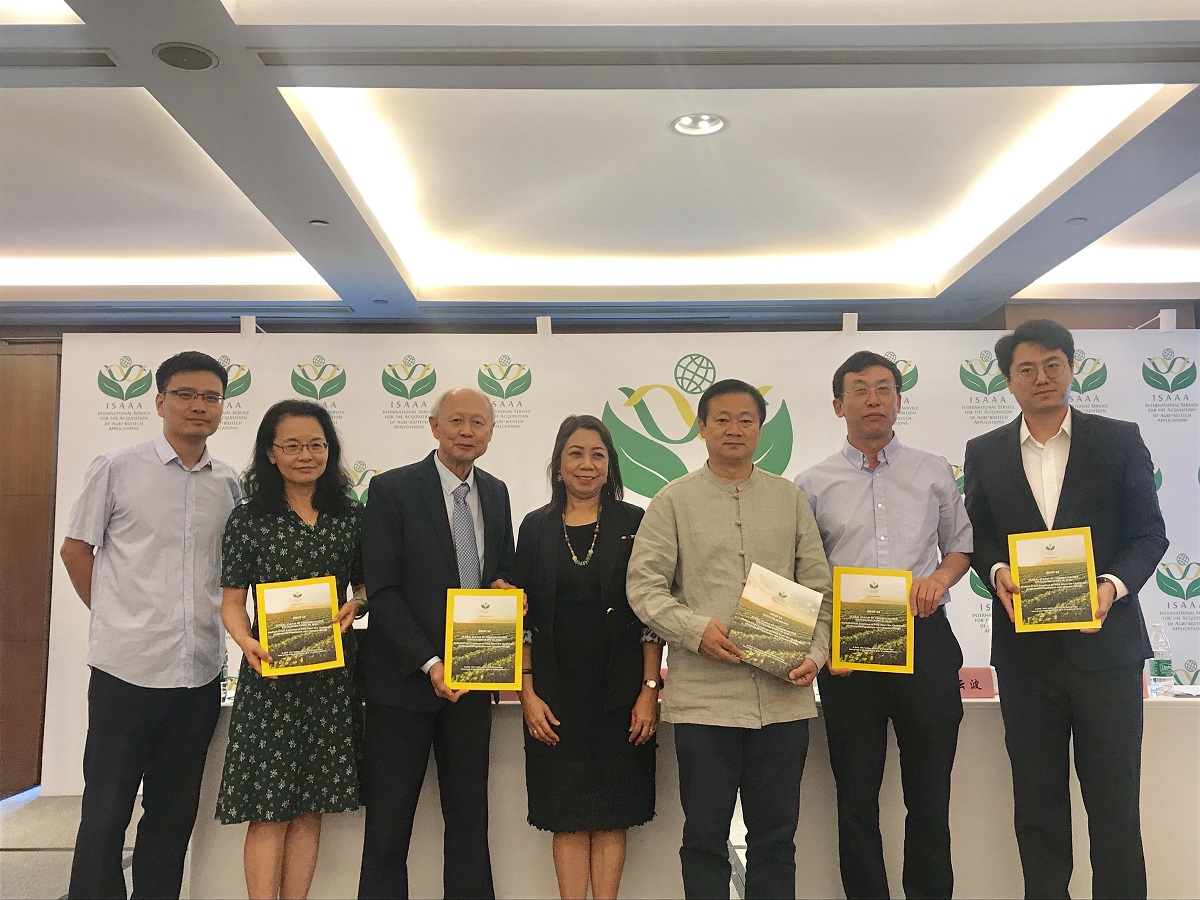
Major GM Crops Hit Saturation Point in Biggest Markets, ISAAA Reports
August 28, 2019| |
Adoption rates of the top five biotech crop-planting countries were close to 100% in 2018, according to the Global Status of Commercialized Biotech/GM Crops in 2018. The report was released by the International Service of Acquisition on Agri-biotech Applications (ISAAA) on August 22, 2019 during a seminar in Tokyo, Japan, attended by 90 stakeholders. The U.S., Brazil, Argentina, Canada, and India, which have gained enormous benefits from planting GM crops over the years, continue to adopt GM crops to meet the challenges of increased population and climate change.
ISAAA reported that the U.S. was top GM crops producer worldwide with 75 million hectares of biotech crops planted in 2018. The average adoption rate for the major GM crops (soybeans, maize, and canola) in the U.S. was 93.3%. Brazil planted 51.3 million hectares of biotech crops, mostly soybeans, maize, and cotton. These major biotech crops had an average adoption rate of 93%. Argentina planted a total of 23.6 million hectares of GM soybean, maize, and cotton, with an average adoption rate of ~100%. Canadian farmers grew 12.75 million hectares of biotech crops, wherein the major crops had an average adoption rate of 92.5%. India, which planted biotech cotton on 11.6 million hectares, which was 95% of the total cotton plantings in the country. The high adoption rates indicate that crop biotechnology meets the needs of consumers and producers.
The seminar in Tokyo, Japan was organized in collaboration with Nippon Biotechnology Information Center and Japan BioIndustry Association. The report was also launched in Beijing, China during a press conference in collaboration with CropLife Beijing office and a seminar organized by the Chinese Academy of Agricultural Sciences.
Download the Executive Summary of the report from the ISAAA website. The full report is available for purchase in electronic format.
| |
You might also like:
- Biotech Crops Continue to Help Meet the Challenges of Increased Population and Climate Change
- ISAAA Brief 54-2018: Executive Summary
- ISAAA Brief 54-2018: Infographics
Biotech Updates is a weekly newsletter of ISAAA, a not-for-profit organization. It is distributed for free to over 22,000 subscribers worldwide to inform them about the key developments in biosciences, especially in biotechnology. Your support will help us in our mission to feed the world with knowledge. You can help by donating as little as $10.
-
See more articles:
-
News from Around the World
- Major GM Crops Hit Saturation Point in Biggest Markets, ISAAA Reports
- GM Crop Adoption Continues to Move Forward in Africa
- BASF Launches Herbicide Tolerant Stacked Traits Soybeans
- 'Spread the Gospel of Biotech' - PH Agriculture Official
- Mainland South Australia to Lift GMO Ban
- Research Finds How Plants Measure CO2 Uptake
-
Research Highlights
- Scientists Complete High-resolution 3D Genome Map of Rice
- Research Sheds Light on Key Component of Plant Immune Systems
-
Plant
- Classification of Genome-edited Plants Define How They Are Regulated
- Rain-resistant Wheat Developed Using Genome Editing
-
Read the latest: - Biotech Updates (December 3, 2025)
- Gene Editing Supplement (November 26, 2025)
- Gene Drive Supplement (February 22, 2023)
-
Subscribe to BU: - Share
- Tweet

